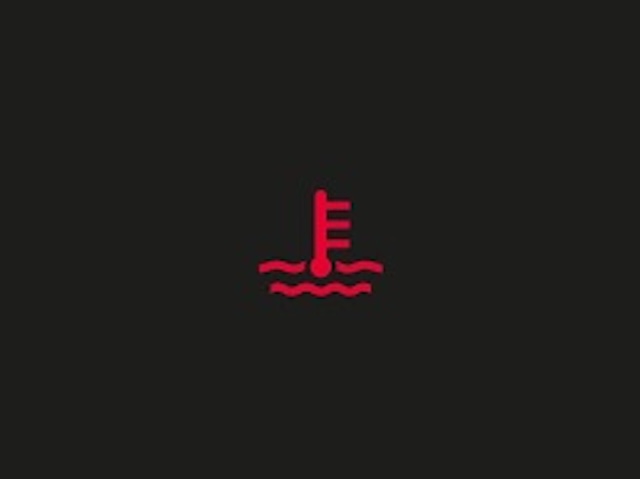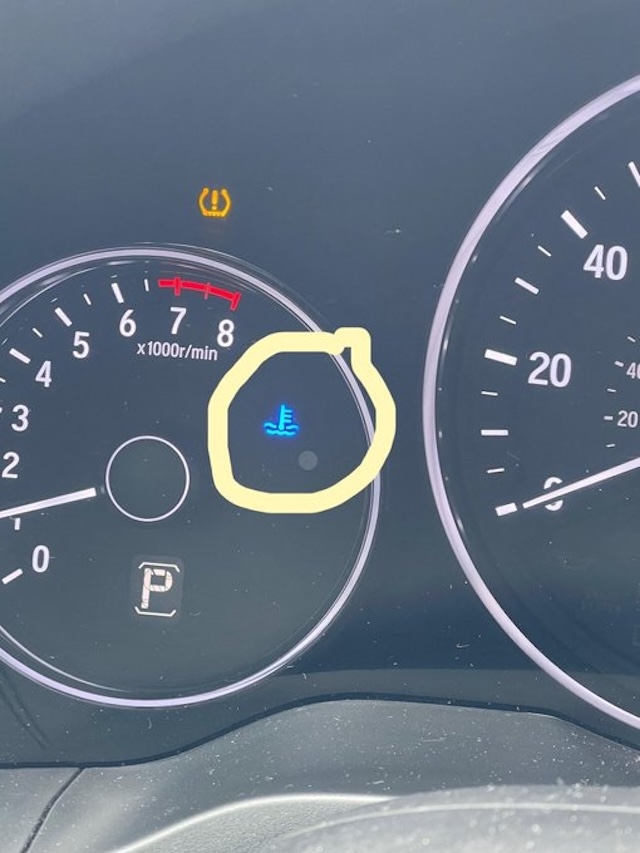The dashboard of a car can sometimes feel like a sea of confusing symbols. When a warning light appears, it’s not always clear what it means, especially when the symbol looks unfamiliar. One of the most perplexing symbols, often described as resembling a “boat,” has left drivers puzzled for decades. However, despite its appearance, this quirky symbol is an important warning that could prevent significant engine damage.
What the “Boat-Like” Symbol Really Signifies
Officially known as the engine coolant temperature warning light, this symbol might resemble a thermometer above wavy lines, but it has nothing to do with water or boating. Instead, it signals an issue with your car’s cooling system. Specifically, it means that your engine is overheating or experiencing a problem with its coolant. If ignored, this light can lead to catastrophic engine damage, including warped engine parts, cracked cylinder heads, or even complete engine failure.
Learn more about the meaning behind filter symbols and warning lights on your car’s dashboard – watch the videos now:
Why Many Drivers Are Unaware of This Critical Warning
A recent survey by ATS Euromaster revealed a shocking finding: 80% of drivers don’t recognize what this warning light means. This lack of awareness is alarming, as it suggests many drivers may be unknowingly putting their engines at risk. The confusion surrounding this symbol has even turned into a social media joke. A viral post on X (formerly Twitter) included a picture of the warning light with the caption, “What does this even mean?” Responses ranged from humorous guesses like, “Time to set sail!” to completely inaccurate advice, such as, “Your engine isn’t warmed up yet.” However, none of these answers are correct. When this light appears, immediate action is required to avoid serious engine damage.

Steps to Take When the Coolant Warning Light Appears
Seeing the coolant warning light can be alarming, but staying calm and following the right steps can save your engine. Here’s what you should do:
Pull Over Immediately
As soon as you see the light, find a safe spot to pull over and turn off the engine. Continuing to drive with an overheating engine can cause irreversible damage in a matter of minutes.
Let the Engine Cool
Don’t pop the hood right away. The coolant is under high pressure and can cause burns if the reservoir cap is opened too soon. Wait at least 30 minutes to let the engine cool completely.
Check the Coolant Levels
After the engine has cooled, inspect the coolant reservoir. Most cars have transparent tanks with minimum and maximum markers. If the coolant is low, carefully top it off with the manufacturer-recommended coolant.
Look for Signs of a Problem
If topping off the coolant doesn’t fix the issue, inspect the engine for other signs of trouble. Common indicators include puddles of coolant under the car, hissing noises, or a sweet smell, which often indicates a coolant leak.
Seek Professional Help
If you’re unsure of the cause or don’t feel comfortable performing these checks, contact a trusted mechanic or roadside assistance. Continuing to drive with an unresolved cooling system issue could lead to even more damage.
Common Causes of Coolant System Issues
While low coolant levels are the most frequent cause of this warning light, there are several other issues that could trigger it. Some common causes include:
- Coolant Leaks: Cracks in hoses, a damaged radiator, or a faulty gasket can cause coolant to escape the system.
- Faulty Thermostat: A malfunctioning thermostat can block the flow of coolant, causing the engine to overheat.
- Water Pump Problems: The water pump is essential for circulating coolant. If it fails, the engine temperature will rise rapidly.
- Radiator Issues: A clogged or leaking radiator can disrupt the cooling process, leading to overheating.
- Sensor Malfunctions: Sometimes, the warning light may appear due to a faulty temperature sensor, even if the cooling system is functioning properly.

Preventing the Coolant Warning Light from Appearing
The best way to avoid seeing this dreaded light is by staying on top of your car’s maintenance. Here are a few simple steps to keep your cooling system in good condition:
- Regularly Check Coolant Levels: Make a habit of checking your coolant levels every few weeks and topping off as needed.
- Inspect Hoses and Connections: Look for signs of wear, cracks, or leaks in the hoses and connections carrying coolant.
- Flush the Cooling System: Over time, coolant can become contaminated. Follow your vehicle’s maintenance schedule to flush and replace the coolant.
- Check the Radiator: Keep the radiator clean and check it regularly for signs of corrosion or leaks.
- Listen for Odd Sounds or Smells: Pay attention to unusual sounds or smells. A sweet odor, in particular, could signal a coolant leak.
The Costs of Ignoring the Warning Light
Ignoring the engine coolant temperature warning light can have serious consequences, both mechanical and financial. If the engine overheats, it can cause damage to vital components like the head gasket, pistons, and cylinders. Repairing such damage can cost anywhere from $1,000 to $5,000 or more, depending on the severity. In some cases, the damage could be so extensive that replacing the entire engine is necessary.
Taking prompt action when this light appears can save you from these costly repairs and extend the lifespan of your vehicle.
Why Understanding Dashboard Symbols is Essential
Your car’s dashboard is its way of communicating with you, and each warning light serves a specific purpose. Learning to recognize and respond to these symbols is not just about protecting your car—it’s also about ensuring the safety of you and your passengers. The more familiar you are with your dashboard’s symbols, the better equipped you’ll be to handle any road issues that arise.

Conclusion: Don’t Ignore the “Boat-Like” Warning Symbol
The dashboard light that “looks like a boat” may seem puzzling at first, but now you understand its true meaning and importance. It’s not related to water or boating at all; it’s a thermometer over wavy lines indicating an issue with your car’s cooling system. When this light appears, don’t disregard it. Pull over, let the engine cool, check your coolant levels, and seek professional help if necessary. By understanding what this symbol represents and taking appropriate action, you can protect your engine, save on costly repairs, and drive with confidence. The next time this light appears, you’ll know exactly what to do.



